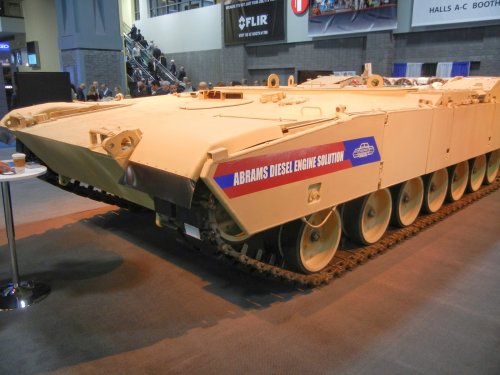Foo Fighter said:
Fare enough, I was thinking of using the diesel in a generator capacity while using electric motors for drive. The interest was reducing fuel usage and costs. Not exactly a new idea as the German Army used this system in WW2 to good effect with a system generally popular with crews.
This is essentially how FCS was laid out. A diesel generator powered an electrical distributor that provided power to the drive motors that drove the sprocket. BAE did similar things with CV90 and M8 AGS. You're right it's not new, but most modern fighting vehicles in the West were also designed 40-50 years ago, and the electrical motors needed for that sort of application only appeared in the last 20 years.
Moose said:
Well, Foo, Noise(frequency rather than volume), weight, complexity, and cost are often cited as issues with switching away from the turbine. It's not a terrible idea, hence the US Army and GF often revisiting it, it's no magic wand. The turbines are a known quantity, the costs are well in control, and there's other priorities that need the attention more urgently.
Tactical mobility/acceleration is the most commonly cited benefit of turbines anecdotally, and they do have a higher torque at lower RPMs, but I suspect that the advantage is not terribly apparent. HIMAG did fine with a diesel. In general I suspect that this is an inflated benefit, as it might be real but it would be quite niche.
Audible signature only really matters when you're standing still. A diesel is pretty loud, they make my ears hurt. A turbine makes my ears hurt for different reasons, but it's also a lot quieter, by 10-15 db. Where a turbine may be 85 db at 1 meter, a diesel of similar size might be 95-100 db at the same distance. At speed though, the only thing you'd be hearing is the clanking of metal on rubber and machine gun fire. However, this is still important in close terrain, or really anything that isn't pretty flat and open like a desert, and probably relevant for cities and forests.
Diesels need to be heated before they can start in extreme cold (-40), which can take an hour or so, and isn't uncommon in Siberia or Alaska. It remains true in extreme hot weather, like deserts. Finally, most diesels are water cooled, which includes all the Euro Powerpacks and American diesels, which can be a problem since liquid cooling is vulnerable to damage. Anecdotally, they're also easier to maintain, due to being simpler, but I'm not sure this is a real benefit. There's also no real reliability advantage, modern diesels are extremely reliable, just ask Merkava IV or AVDS-1790.
So the biggest known, real advantages are probably the extreme weather performance, idle audible signature, and the lack of a cooling subsystem.
Fuel consumption is a tremendous disadvantage, but I haven't been restricted on how many liters of petrol I can buy yet, so I suspect that the fuel cost problem isn't quite as serious as it was when the M-1 tank was being designed.
Foo Fighter said:
I would like to know what is so wrong in the proposal that the M1 be fitted with a diesel engine and electric drive. Seriously and without the rancor or taking the question as an affront.
It would require an entirely new hull. The US Army barely has enough money to pay for its soldiers and some new golf carts, let alone a new tank, and what new tanks it wanted to buy would have had diesels anyway because I was actually wrong about LV50-2 being used in FCS and it turns out that it was diesel powered like the M2/M8.
I suspect the US Army considers turbines only to be worth it for heavy armor, then. Part of the reason GCV died, besides managerial incompetence and the fiscal cliff, was because the diesel powerplant didn't provide sufficient power for a 70-ton fighting vehicle. At that point, you'd be looking at LV100 like FIFV was supposed to get.

